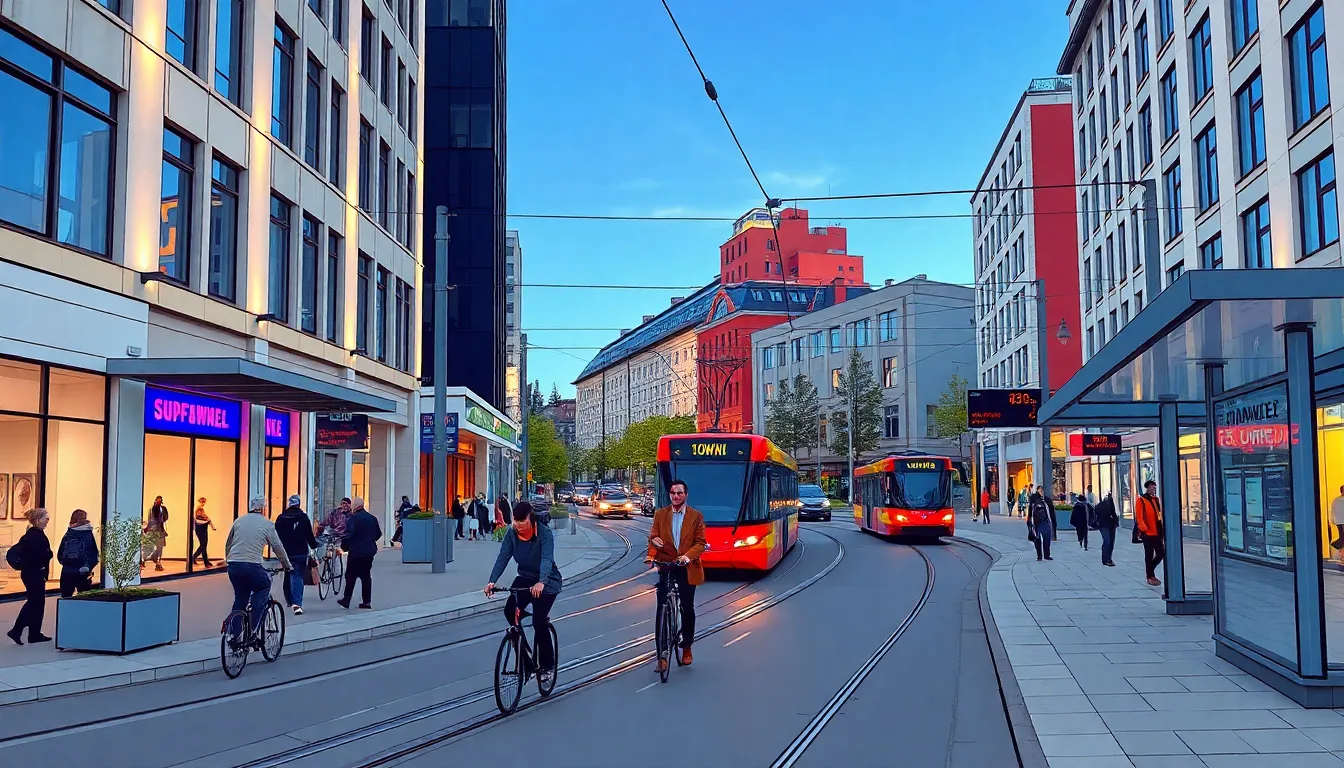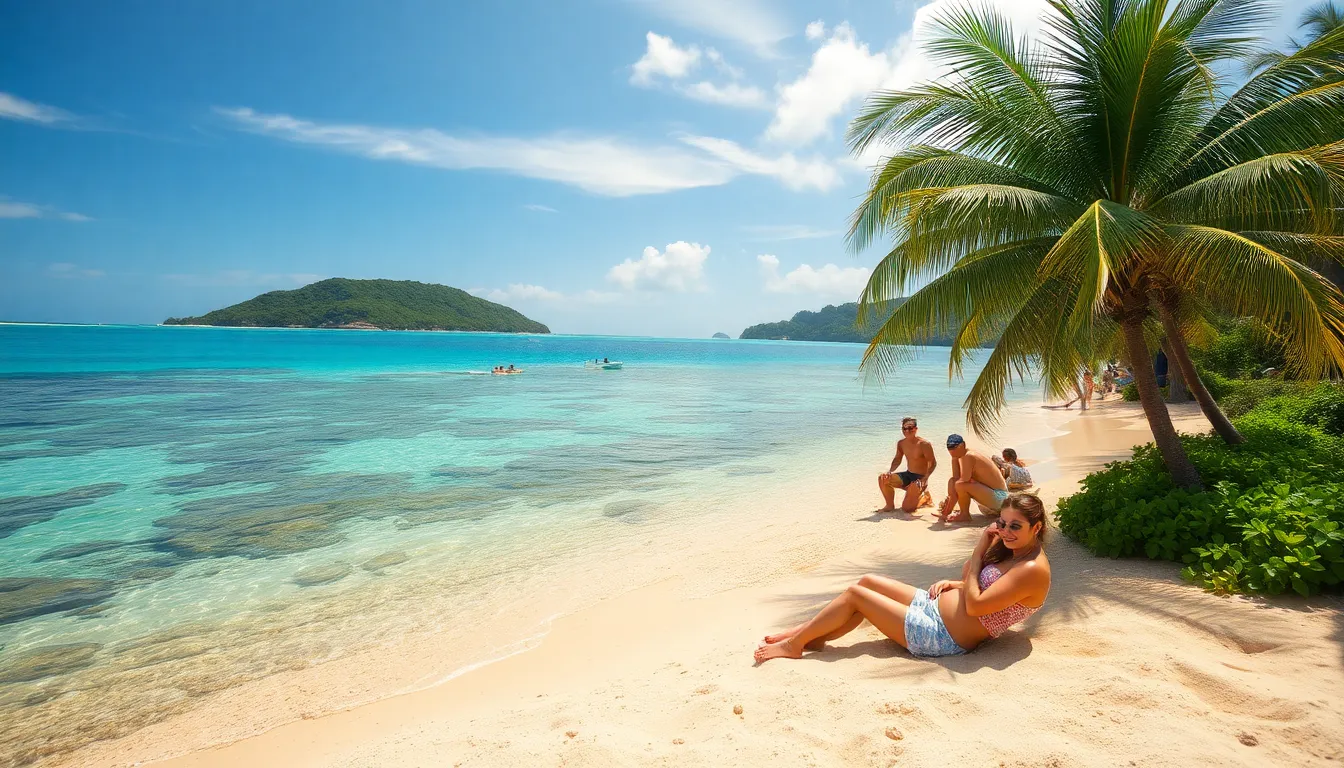Norway, known for its stunning fjords and vibrant culture, is also infamous for its wallet-draining cost of living. If you’ve ever dreamed of living in a land where the air is crisp, the scenery is breathtaking, and the prices can make your bank account weep, you’re in for a treat. From the price of a simple cup of coffee that could rival a small mortgage to the jaw-dropping grocery bills, understanding the cost of living in Norway is essential for anyone considering a move or an extended stay.
Table of Contents
ToggleOverview of Cost Of Living Norway
Cost of living in Norway ranks among the highest in the world. Housing expenses remain significant, especially in major cities like Oslo and Bergen. Rents for one-bedroom apartments average around $1,500 monthly in Oslo. Expect to pay more if living close to city centers.
Groceries also incur notable costs. Basic items such as bread, milk, and eggs cost substantially more than in many other countries. For example, a loaf of bread can reach $3, while a gallon of milk might cost $5. Dining out further increases living expenses, with restaurant meals averaging $25 per person.
Transportation in Norway adds another layer to the financial picture. Public transportation fares typically range from $3 to $5 per ride, depending on the city. Car ownership involves additional expenses like fuel prices, which average $6 per gallon.
Utilities play a role in the cost of living as well. Monthly bills for electricity, water, and heating may hover around $200. Internet services stand at an average of $60 per month, accounting for essential connectivity.
Leisure activities also bear a hefty price. Gym memberships average $60, while cinema tickets can reach $15.
Taxes contribute significantly to the overall cost of living in Norway. Norway’s high income tax rates reflect the country’s robust social welfare programs. Taxpayers can expect rates around 22% for personal income, with additional contributions for higher earners.
Understanding these financial factors is crucial for anyone considering relocation or an extended visit to Norway.
Key Factors Influencing Cost Of Living

Various factors significantly influence the cost of living in Norway. Understanding housing, transportation, and other essential expenses can provide insight into financial planning for living in this beautiful country.
Housing Costs
Housing costs represent a core component of living expenses in Norway. Rent for a one-bedroom apartment in major cities, such as Oslo and Bergen, averages around $1,500 per month. Various factors contribute to these figures, including location and demand. Areas with easy access to public transport typically exhibit higher rents. Purchasing property can be even more expensive, with prices per square meter soaring. The combination of high demand and limited housing supply creates a challenging market for renters and buyers alike.
Transportation Expenses
Transportation costs contribute significantly to monthly budgets. Public transit fares in cities like Oslo range from $3 to $5 for single journeys, while monthly passes can reach $90. Fuel prices also play a role, averaging around $6 per gallon, which can deter car ownership. Many people choose to use bicycles, which are popular in urban settings. Such choices reflect a broader lifestyle that values sustainability and public transport. Owning a car incurs higher costs due to insurance and maintenance, adding to overall transportation expenses.
Food and Dining Expenses
Food and dining costs in Norway present a considerable financial challenge. Residents encounter high prices for both groceries and restaurant meals.
Grocery Prices
Grocery prices in Norway rank among the highest in Europe. A loaf of bread costs approximately $4, while a liter of milk averages $2.5. Fresh produce also carries a premium, with items like apples at about $3 per kilogram. For families, monthly grocery bills can easily exceed $800. Budgeting becomes essential to manage these expenses effectively. The choice of shopping at discount stores like Rema 1000 or Coop can help to ease some financial strain. However, even at these retailers, basic staples maintain a higher price point compared to many other countries.
Restaurant Costs
Dining out in Norway significantly impacts one’s budget. An average meal at a mid-range restaurant costs around $25 per person. For a three-course dinner at a nicer establishment, the price can climb to $70 or more. Many find eating out on special occasions more manageable, given the high costs associated with regular dining. Fast food options offer some relief, but prices remain elevated, typically around $15 for a meal. In cities like Oslo and Bergen, the dining scene showcases quality food but at a corresponding price. Ultimately, dining expenses contribute notably to the overall cost of living.
Healthcare and Education Costs
Healthcare costs in Norway are significant yet primarily funded through a taxpayer-financed system. Residents contribute to this system via a national insurance scheme, ensuring access to quality healthcare services. Doctor visits usually average around $23, while hospital treatment is covered, primarily by the government. Prescription medications have patient co-pays that can range from $11 to $35, depending on the medication.
Education expenses in Norway reflect the country’s commitment to providing quality schooling. Public education, from primary through secondary levels, remains free for residents. Tertiary education incurs fees, generally ranging from $100 to $300 annually, making it quite affordable compared to other countries. International students may face higher costs, especially in private institutions, where tuition can soar to $15,000 annually.
Childcare expenses also impact family budgets, especially for those with young children. Monthly fees for daycare services can average between $400 and $800, influenced by the child’s age and type of care. Subsidies exist to support lower-income families, easing the financial burden.
Comparative analysis shows living costs related to healthcare and education in Norway remain high. Residents often find peace of mind in the quality and accessibility of these services, reinforcing their positive living experience. Knowing these costs enables better financial planning for individuals and families considering relocation or extended stays in Norway.
Comparison with Other Countries
Cost of living in Norway is significantly higher compared to many other countries. Housing expenses, for example, average $1,500 monthly for one-bedroom apartments in major cities like Oslo and Bergen, while similar apartments in cities such as Lisbon or Madrid often cost around $1,000.
Grocery prices in Norway also stand out. A loaf of bread typically costs about $4, in contrast to approximately $1 in the United States. Milk, averaging $2.50 per liter, presents similar disparities, with prices lower in countries like Germany and France where a liter can cost only $1.
Dining out is another area where costs escalate. Average meals at mid-range restaurants reach around $25 per person in Norway, whereas the same meals might only cost $15 in the UK or Canada. Fast food prices, too, reflect this trend, with meals priced at $15 in Norway compared to approximately $8 in the U.S.
Transportation costs contribute significantly to the financial landscape as well. Public transit fares range from $3 to $5 per journey, making getting around in Norway more expensive compared to cities like Berlin, where one can pay about $2 for a ticket. Fuel prices average $6 per gallon, placing significant financial burdens on car owners compared to averages of $3 in the U.S.
Utilities and internet services add to the overall expenses. Monthly bills for electricity, water, and heating sit around $200 in Norway, higher than the average $150 found in countries like France. Internet services average $60, which can be pricier than what residents pay in Eastern Europe, where prices can drop to below $30.
Overall, individuals planning a move to Norway must consider these extensive financial factors compared to other countries. Each of these components emphasizes the elevated cost of living that characterizes Norway’s unique economic landscape.
Living in Norway presents a unique blend of breathtaking scenery and rich culture but comes with significant financial considerations. The high cost of housing groceries and dining can strain budgets. While the country offers a robust social welfare system funded by taxes the overall expenses can be daunting for newcomers. Understanding these financial aspects is essential for anyone contemplating a move or extended stay in Norway. With careful budgeting and smart shopping choices it’s possible to navigate the high costs and enjoy all that this beautiful country has to offer.






